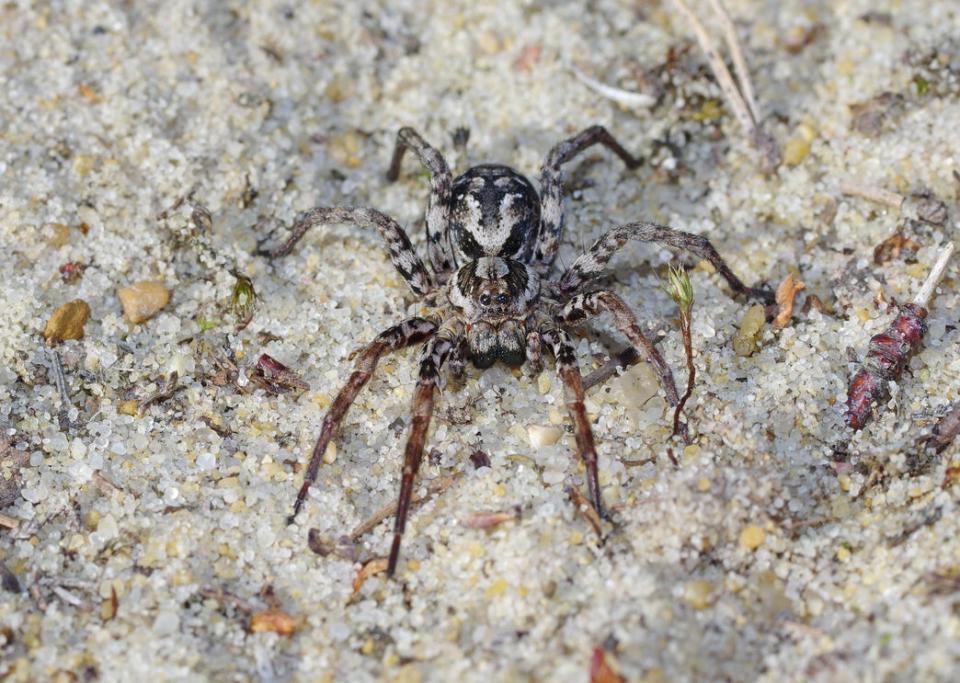Huge spider assumed extinct in Britain discovered on MoD site after quarter of a century

One of Britain’s largest spiders has been spotted for the first time in more than a quarter of a century after it was feared to be extinct.
The critically endangered great fox-spider, one of the biggest of the wolf-spider Lycosidae family of spiders, was rediscovered at a Ministry of Defence training site in Surrey.
The “impressive beast” had not been seen since the early 1990s and had only ever been found at three sites in Dorset and Surrey.
Mike Waite, from Surrey Wildlife Trust, said he was “over the moon” with the discovery.
“This formidable-looking creature is an impressive beast, perfectly camouflaged and also largely nocturnal, and for all its size it has been remarkably elusive,” he said.
Mr Waite spent two years searching late at night for the creature before discovering some unidentifiable immature spiderlings on military land.
He then found several mature males and one female great-fox spider, which measured 55mm, or just over two inches, in diameter including its hairy, spiny legs.
The Alopecosa fabrilis is an opportunistic predator that hunts at night and is named for its wolf-like habit of chasing down its prey, across sandy terrain, over gravel and rocks before pouncing and capturing insects on the run.
The spider has eight black eyes and will immobilise its prey, including beetles, ants and smaller spiders, by injecting them with venom that liquifies the internal organs of the insect.
The creatures shelter in silk-lined burrows or holes under rocks.

Waite plans to continue his study to gauge the size of the population
PANick Baker, a naturalist, TV presenter and president of the British Arachnological Society, described the rediscovery as “the most exciting thing to happen in wildlife circles for quite some time”.
“The prefix ‘great’ doesn’t seem to do it justice, maybe it should be the fabulous or fantastic fox-spider,” he said.
“Even if the back story of its rarity and its rediscovery wasn’t taken into count, this spider is mega.
“It’s about as handsome as a spider gets, it’s big and now it’s officially a member of the British fauna again.”
Mr Waite plans to continue his study to gauge the size of the population.
Additional reporting by Press Association
Read more
Giant house spiders invading UK homes looking for love
Rare jumping spider discovered in UK for first time ever
Why you shouldn't kill spiders in your home
There are about 650 species of spider in the UK – and this is the

 Yahoo Finance
Yahoo Finance 